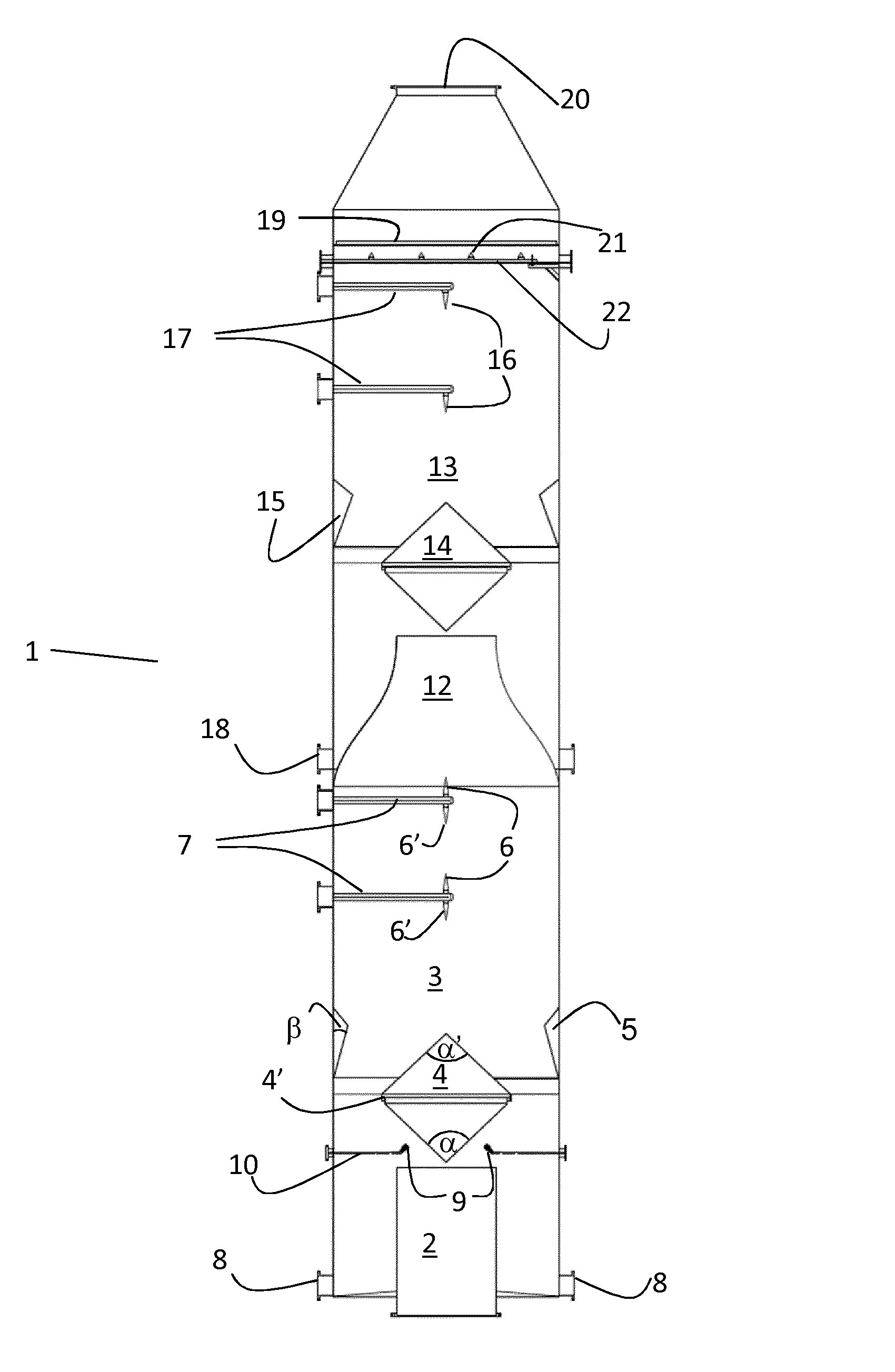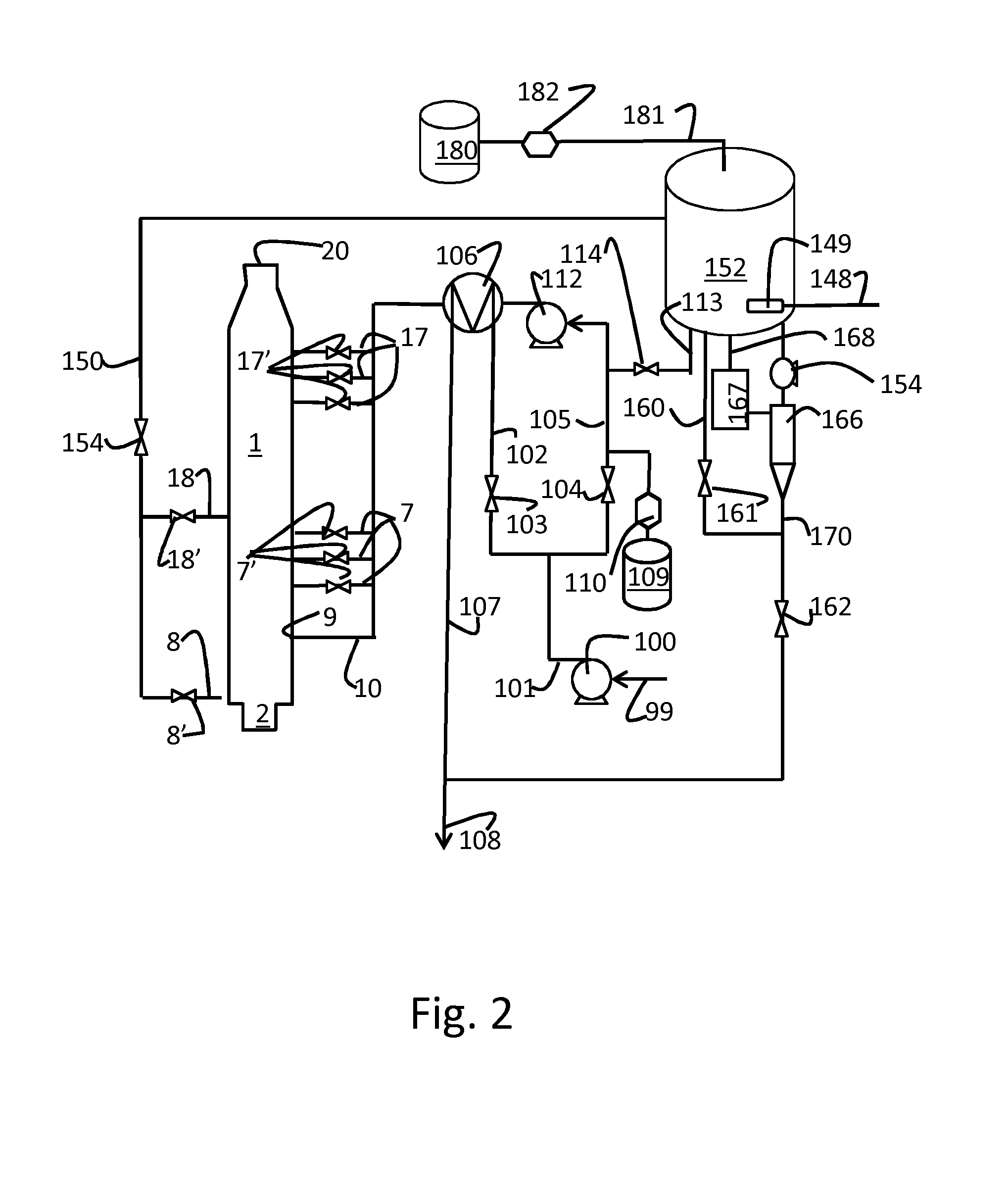Marine exhaust gas scrubber
a scrubber and exhaust gas technology, applied in the field of marine exhaust gas cleaning, can solve the problems of high levels of sox and particles in the exhaust gas, the inability of scrubbers without packing to increase the contact area between gas and liquid, and the inability of scrubbers without packing to achieve the effect of increasing the capacity of the scrubber to absorb sox and improving the efficiency of scrubbing. the effect of efficiency
- Summary
- Abstract
- Description
- Claims
- Application Information
AI Technical Summary
Benefits of technology
Problems solved by technology
Method used
Image
Examples
example
[0097]Calculations have been made for handling of exhaust gas from a 12.6 MW ships engine, having an exhaust gas flow rate at 100% load of about 71,000 m3 / h. The exhaust gas flow from the engine may vary from about 14,000 m3 / h to about 71,000 m3 / h. The calculations are made at the normal load of about 75% of maximum load, resulting in a gas flow of about 53,200 m3 / h, corresponding to an incoming gas velocity in an exhaust gas pipe having a diameter of about 1.2 m of 38 m / s. As mentioned above, the exhaust gas in the exhaust tube 2 has typically a temperature from about 220 to about 375° C., depending on the load of the engine producing the exhaust gas and if an economizer, normally arranged to utilize the heat in the exhaust gas for generation of steam, is engaged.
[0098]The scrubber 1 used for the calculations has a diameter of about 2.3 meters, and a total height of about 15.5 meters. Starting from a normal load and a exhaust gas temperature of 240° C. and an exhaust gas mass flow ...
PUM
| Property | Measurement | Unit |
|---|---|---|
| top angle | aaaaa | aaaaa |
| top angle | aaaaa | aaaaa |
| diameter | aaaaa | aaaaa |
Abstract
Description
Claims
Application Information
 Login to View More
Login to View More - R&D
- Intellectual Property
- Life Sciences
- Materials
- Tech Scout
- Unparalleled Data Quality
- Higher Quality Content
- 60% Fewer Hallucinations
Browse by: Latest US Patents, China's latest patents, Technical Efficacy Thesaurus, Application Domain, Technology Topic, Popular Technical Reports.
© 2025 PatSnap. All rights reserved.Legal|Privacy policy|Modern Slavery Act Transparency Statement|Sitemap|About US| Contact US: help@patsnap.com



